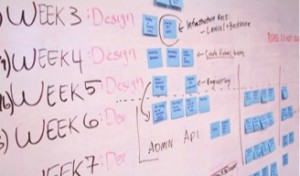In baseball, every team player has a specialty by position in the field. First base, pitcher, short stop, etc.; each one has mastered a role and its related skillset to help their team win. Sometimes, there is a player who can successfully play multiple positions and can fill in gaps when necessary. While we’re talking sports, the same can be applied to the IT world.
When building your IT “Dream Team,” who wouldn’t want a team of specialists, all masters in a specific area from unified communications to wireless presentation. However, our resource availability may dictate whom we can bring on board. Your team may be a team of 1 or 100. Having a team of generalists versus core specialists may prove to be better depending on your business needs.
How can you ensure you have the right balance of skillsets to serve your colleagues while maintaining a secure work environment? Having “jacks of all trades” can be great, but there’s always the ending to that saying…”master of none.” On the other hand, having just a team of specialists can be an obstacle. For example, if your security specialist is unavailable, a project or call for support could be delayed.
Whether you’re building your IT team from scratch or reorganizing the structure, what are some things you can do as an IT leader?
- Create Your Ideal Team. You have a vision on how you see your IT team structured and working in your organization. Put that vision to paper (or whiteboard) with roles and responsibilities mapped. It’s the framework for how you want your team to operate. This is where you can start to work towards filling gaps, assigning roles, seeking new talent, etc.
- Manage Your Resources. Now it’s time to be realistic. As leaders, we have to understand that our dream may not come to fruition right now. It becomes a matter of what resources we have available to us: time, people and budget.
- Time: Where are you on your IT roadmap? The projects that have concrete deadlines may require you to shift your team’s responsibilities. You may need to have more specialists on certain projects with generalists covering other team responsibilities
- People: The number of employees you have now may increase or decrease depending on business needs and budgets. A small team may require more generalists than specialists to support the organization. Outsourcing your IT may be an option to keep specialists in-house or vice versa
- Budget: Your working budget may include what you can afford to spend on projects, technology and people. The amount of money available to support your vision is critical. If the funds are available, then you will need to find ways to scale
- Look at IT & Business Trends. New technology for your business may require a specialist versus a generalist to develop and implement. Examine whom your peers are hiring. Industry publications can give you some insights on how teams are structured to meet the changes in business styles and communication.
- Promote Professional Development. New technology is also an opportunity for learning. Your generalists can become specialists with your support. You can grow your team from within the organization. Connect with your employees to ee how they want to grow with you. If resources allow, you can guide them on a learning track that can benefit you both
- Be Aligned. Your organization’s goals and objectives will give you direction on how your IT team will function. Hiring the right people is a part of that. Will your current team meet the challenges ahead? Do you need to bring on or develop specialties? Discuss with other leaders in your organization on how they see IT working for them. That way, you and your team can work with together towards the same goals
We want to be the champions of technology at work. IT generalists can cover the gamut of new technology, maintenance and support calls. IT specialists can set our organization apart with the tools to differentiate our business world. Nevertheless, having the right people has to fit in with our current structure, resources and goals.

